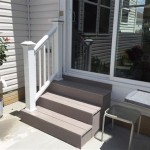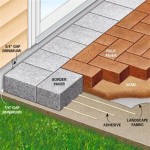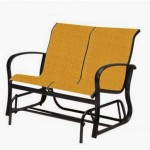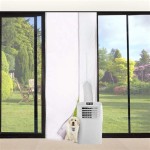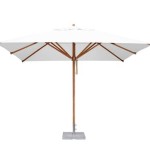Spray Painting Wicker Patio Furniture
Wicker patio furniture, with its classic appeal and comfortable design, often becomes a staple in outdoor living spaces. However, exposure to the elements can lead to fading, chipping, and general wear and tear. Spray painting offers a cost-effective and efficient way to revitalize wicker furniture, extending its lifespan and enhancing its aesthetic appeal. This article will guide readers through the process of spray painting wicker furniture, covering necessary materials, preparation steps, painting techniques, and important safety considerations.
Materials Required
Before beginning the project, gathering the necessary materials ensures a smooth and efficient process. Essential items include:
- Drop cloths or plastic sheeting: These protect the surrounding area from overspray.
- Painter's tape: This is used to mask off areas that should not be painted.
- Sandpaper (medium and fine grit): Sandpaper prepares the surface for better paint adhesion.
- Cleaning solution (mild detergent and water): This removes dirt and grime.
-Spray paint primer specifically designed for plastic/wicker: Primer promotes paint adhesion and durability.
- Spray paint formulated for outdoor use and suitable for plastic/wicker: Choose a color and finish that complements the outdoor setting.
- Safety glasses and a respirator or mask: These protect against fumes and airborne particles.
-Gloves: These protect hands from paint and cleaning solutions.
-Optional: Wire brush for removing loose wicker fibers or debris.
Preparation is Key
Proper preparation is crucial for achieving a professional-looking finish and ensuring paint longevity. The following steps outline the preparation process:
-Cleaning: Thoroughly clean the furniture with a mild detergent and water solution. A stiff brush can be used to remove stubborn dirt or mildew. Rinse thoroughly and allow the furniture to dry completely.
-Repairs : Inspect the furniture for any loose or damaged wicker. Tighten loose strands with glue or replace damaged sections if necessary. A wire brush can be helpful for removing loose fibers or debris.
-Sanding: Lightly sand the furniture with medium-grit sandpaper to create a slightly rough surface for better paint adhesion. Follow up with a light sanding using fine-grit sandpaper to smooth the surface. Wipe away any sanding dust with a damp cloth.
-Masking: Use painter's tape to mask off any areas that should not be painted, such as hardware or decorative elements.
-Surface Protection: Cover the surrounding area with drop cloths or plastic sheeting to protect it from overspray.
Spray Painting Techniques
Applying the paint correctly ensures even coverage and minimizes drips or runs. The following techniques contribute to a professional finish:
-Priming: Apply a thin, even coat of primer specifically designed for plastic or wicker. Allow the primer to dry completely according to the manufacturer's instructions.
-Painting: Hold the spray can approximately 10-12 inches away from the furniture. Use smooth, sweeping motions, overlapping each pass slightly to ensure even coverage. Avoid holding the can in one spot for too long, as this can cause drips or runs.
-Multiple Coats: Apply multiple thin coats of paint, allowing each coat to dry completely before applying the next. Thin coats are preferable to thick coats, which are more prone to dripping and cracking.
-Difficult-to-Reach Areas: Use different nozzle angles and short bursts of spray for hard-to-reach areas. Ensure complete coverage to prevent uneven coloring.
Safety Precautions
Working with spray paint requires adherence to safety guidelines to minimize potential health risks:
-Ventilation: Work in a well-ventilated area, preferably outdoors. Adequate ventilation helps disperse fumes and prevents inhalation of harmful particles.
-Respiratory Protection: Wear a respirator or mask designed for paint fumes to protect the respiratory system. This is especially important when working with oil-based paints or in enclosed spaces.
-Eye Protection: Wear safety glasses to protect eyes from overspray and paint particles.
-Skin Protection: Wear gloves to protect skin from contact with paint and cleaning solutions.
-Fire Hazards: Spray paint is flammable. Keep away from open flames and heat sources. Ensure proper disposal of empty cans and used materials.
Drying and Curing
Allow the final coat of paint to dry thoroughly before using the furniture. Drying times vary depending on the type of paint and environmental conditions. Refer to the manufacturer's instructions for specific drying and curing times. Proper drying and curing ensure the paint achieves its maximum durability and resistance to chipping and fading.
Maintenance
Regular cleaning and maintenance will help preserve the finish and extend the life of the painted furniture. Wipe down the furniture periodically with a damp cloth and mild detergent solution. Avoid using abrasive cleaners or harsh chemicals, which can damage the paint. Store the furniture in a protected area during the off-season to minimize exposure to harsh weather conditions.

Spray Painting Our Wicker Patio Chairs Grove House Reno

How To Spray Paint Wicker Refresh Restyle

How To Spray Paint Resin Wicker Chairs If You Dare Patio Furniture Makeover Outdoor

How To Spray Paint Wicker Refresh Restyle

How To Spray Paint Wicker Furniture

How To Spray Paint Outdoor Resin Wicker Furniture Plastic Painted

How To Spray Paint Wicker Furniture

How To Paint Wicker Porch Makeover Beingbrook

One Day Patio Furniture Makeover With Spray Paint

How To Spray Paint Outdoor Resin Wicker Furniture Patio Makeover
See Also

